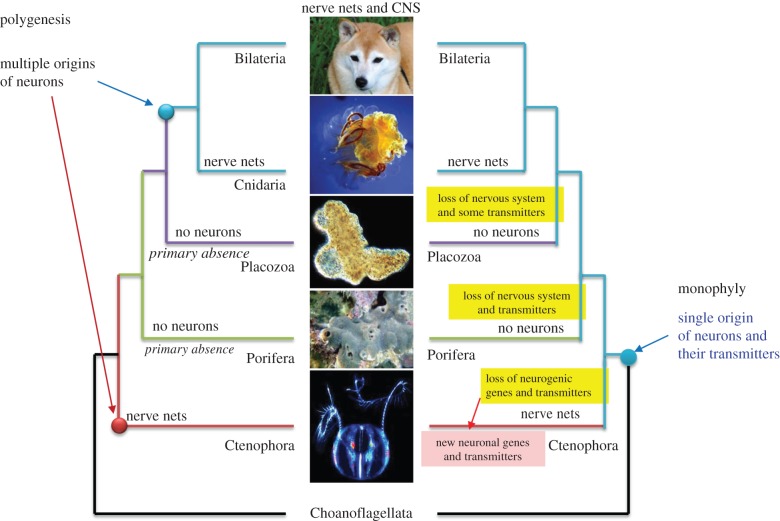Figure 2.
Two alternative scenarios of neuronal evolution (modified from Moroz et al. [14]). The polygenesis or multiple origins of neurons as the example of convergent evolution (left). The single-origin hypotheses implies multiple loss of neural systems in sponges and placozoans as well as massive loss of many molecular components involved in neurogenesis and synaptic functions of the Urmetazoan in ctenophores (right). The single-origin hypothesis still implies independent recruitment of other molecular components involved in neural and synaptic functions—the situation which still suggests the extensive parallel evolution of neural organization in ctenophores. Here, ctenophores are placed as sister to other animals. However, even the classical view of the animal phylogeny (sponges are sisters to other animals, see fig. 2 in [14]) still implies the parallel evolution of neurons and neural signalling in the animal kingdom. See text for details.

